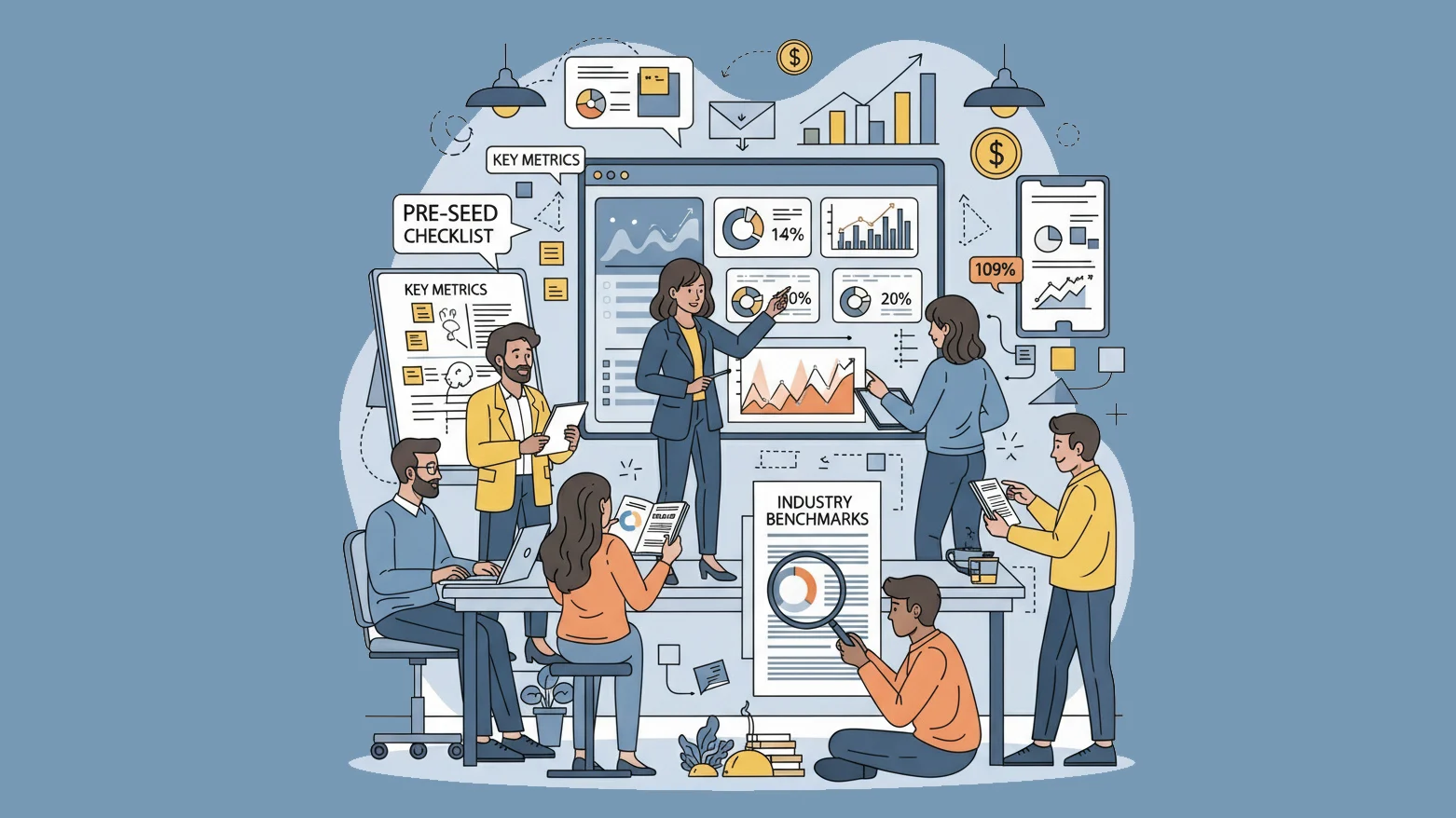
Overview
Two biotech CEOs break down what it actually takes to raise pre-seed capital, including how they built momentum, secured early believers, and converted traction into investment.
The pre-seed funding stage is an exciting time. With so much to think about—from clarifying your innovation and how it differs from competitors to modeling costs and early market fit—figuring out funding can feel overwhelming.
This stage represents the first step in turning your idea into a Minimum Viable Product (MVP), meaning it can be tested and validated in an early-market setting. As the earliest stage of funding, pre-seed capital is intended to cover product development, market research, staffing, legal guidance, and related costs.
During this stage, founders often contribute personal capital and solicit contributions from family, friends, and angel investors, as well as apply to accelerators and crowdfunding platforms. The goal is to build enough traction to demonstrate early market fit and attract investors for the next phase: seed-stage funding.
For startups ready to embark on this journey, consider insight from entrepreneurs who have already navigated it.
RELATED: How to Nail Your Seed Raise—From Biotech CEOs Who’ve Been Through It
Investors Back Businesses, Not Just Breakthroughs
While your innovation isn’t viable without strong science, investors ultimately back a commercial pathway and a plan to bring the product to market. For many scientific founders, this means leaving their comfort zone by learning the fundamentals of company-building.
In 2016, Chandrabali Ghose, PhD, founded Bioharmony Therapeutics to develop therapies targeting multidrug-resistant bacteria. At the time, she didn’t have a business background, so she enrolled in a six-month program through ELabNYC that covered intellectual property, company formation, early pipeline strategy, and market positioning.
“I learned a lot and the mentors were super helpful in terms of pointing me in the right direction. Every stage of my career involved finding the right mentors,” she said.
She was eventually introduced to an investor who launched a venture fund and committed capital even before she formally spun out the company.
“This was different, but I knew what kind of technology I wanted. I went to Rockefeller University, which was affiliated with my former employer, the Aaron Diamond AIDS Research Center, and we finalized a licensing deal,” Ghose said.
For Oriana Papin-Zoghbi, Co-Founder and CEO of AOA Dx, which developed an AI-driven blood test for the early detection of ovarian cancer, learning on the job—and tapping back into her economics background—gave her the foundation she needed during pre-seed.
“I had studied economics in college but that was 15 years before I started AOA Dx,” she said. “I had worked at two other startups and learned on the job, but I had never raised money before and didn’t have a network, so I learned through mentors and outreach.”
She cold-called and connected with founders and investors on LinkedIn. “I asked for 30 minutes of their time to walk me through the tips and tactics of fundraising and how to build a pitch deck,” she said.
Build a Business Case, Not Just a Technology
Having a well-developed business case that clearly outlines market viability and a credible commercialization path is key to attracting early-stage capital.
When Papin-Zoghbi set out to raise pre-seed funding, she partnered with an academic lab that had secured a small nondilutive research grant. “That gave us a very early high-level scientific proof of concept—around 70 samples,” she said. “But we also had to ground it in what was already published in the field to show the science wasn’t theoretical.”
They worked to build a high-level business strategy so investors could see how the science could scale into a company. They outlined the problem, the solution, the indication, the regulatory pathway, the technology pathway, early milestones, and what a successful launch would look like.
“Fundamentally, our pre-seed was more about the business case than the hypothetical science,” she said. “The novelty was exciting, but it would not have been enough to raise the round on its own. We had to demonstrate that the innovation could support a viable company.”
Warm Intros Beat Cold Outreach
While approaching family and friends is often the first step at pre-seed, real traction comes from widening your circle and building relationships that lead to warm introductions. That includes accelerators, angel groups, conferences, and targeted outreach on LinkedIn.
“Shake people’s hands, reach out to 10 different founders, ask them to give you two introductions and those two to give you two more introductions,” Papin-Zoghbi said. “You build your network from the ground up through a mix of networking and purposeful outreach.”
She raised approximately $2.5 million in early pre-seed capital, largely through friends, family, high-net-worth individuals, and early angels—enough to validate the thesis and extend early traction before a structured seed round.
RELATED: 7 Networking Strategies That Will Get You Funded, Validated, and Seen
Non-Dilutive Capital Buys You Time
The government, accelerators, nonprofit organizations, universities, and private companies offer grants and awards during pre-seed. These funds often do not require giving up equity, which can meaningfully extend runway.
In 2017, Accelerate NY Seed Fund awarded Bioharmony Therapeutics $100,000. In 2019, the company partnered with Boehringer Ingelheim to explore translational advancement. Then in 2021, Ghose received the XSeed Award from Cure, given to minority- and women-led startups.
She said the award provided critical funding that supported proof-of-concept data for its lysin-based therapeutics in relevant animal models. The capital validated the approach and strengthened the company’s position heading into subsequent fundraising. “But we could never raise the next round because infectious disease is really hard to fund—even during the pandemic,” Ghose said. “It’s hard to do clinical trials because you need 15 to 20 thousand people.”
Bioharmony closed in 2022. “It took me a while to bite the bullet and move on. I tried everything to raise funds,” she said. She is now the Chief Scientific Officer at the nonprofit Emily’s Entourage, which advances research and treatments for cystic fibrosis. “We give out money, so I’m on the other side now,” Ghose said. “We fund academic research and a few early companies, especially at the pre-seed and seed stages.”
Momentum Converts Into Institutional Capital
Papin-Zoghbi went on to raise a combined $27 million across pre-seed and seed, including support from Y Combinator, which contributed approximately $5 million in pre-seed extension capital. “That was probably the most entrepreneurial education I got during those three months,” she said. “We were able to advance the hypothesis with a 300-patient study and build out our early R&D plan so we had a credible pathway from science to product.”
That progress positioned AOA Dx to raise its formal seed round—targeted at $15 million but ultimately oversubscribed to $18 million. With that funding, the company built its own lab, expanded its R&D team, and stood up a clinical and regulatory infrastructure.
“It’s a step-by-step approach,” she said. “You start with the early plan, show feasibility through partnerships and traction, and that makes it possible to then build internally.”








